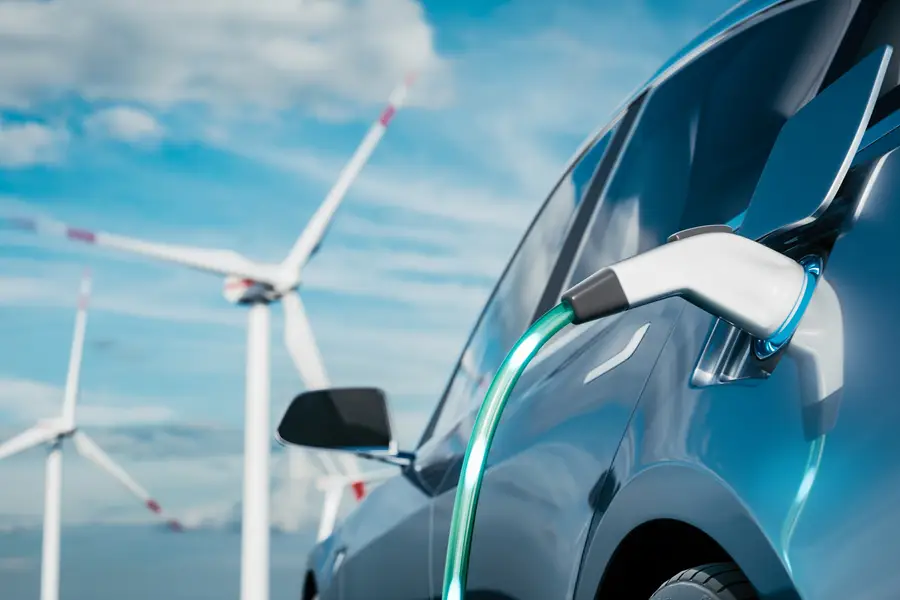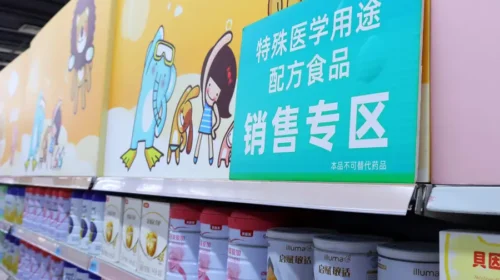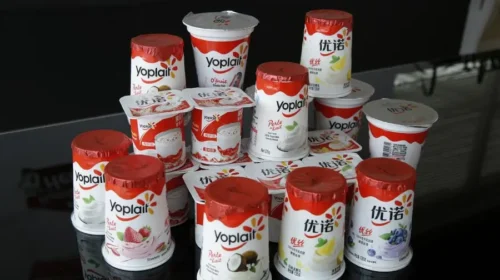Novosense eyes Hong Kong IPO as competition chips away at its cash

The analog chipmaker’s cash and margins dropped sharply last year, sending it into the red
Key Takeaways:
- Novosense has filed for a Hong Kong IPO, posting strong revenue growth last year thanks to an acquisition, as it reported a second consecutive annual loss
- The company may get some temporary relief from Chinese tariffs that could affect U.S. chipmakers, which controlled 22% of China’s analog chip market last year
By Doug Young
Despite U.S. efforts to isolate China’s young microchip industry, the sector remains very much connected to an extremely competitive global marketplace. That difficult reality is front-and- center in a new Hong Kong IPO application from analog chipmaker Suzhou Novosense Microelectronics Co. Ltd. (688052.SH), which is seeking investor cash a second time after listing on Shanghai’s Nasdaq-style STAR Market in 2022.
Novosense isn’t exactly a startup, with a history dating back to 2013. It was profitable for at least part of that history, recording an annual profit as recently as 2022, according to its listing document filed last Friday with the Hong Kong Stock Exchange. But its gross margin has plunged since that time, as the company faces stiff competition in a global chip sector that has recently added major new capacity after big shortages surfaced during the pandemic.
While things don’t look all that positive for Novosense right now, one potential saving factor for the company could be the building U.S.-China trade war. That’s because Novosense sells mostly to the China market, where U.S. imports are suddenly facing tariffs of up to 125% in response to even higher U.S. tariffs on Chinese goods imposed by President Donald Trump.
That could play to Novosense’s advantage, since five of the 15 biggest analog chip sellers in the China market are from the U.S., accounting for about 22% of sales, according to the listing document. If the tariffs remain in place, chips from those U.S. companies could become significantly more expensive, driving buyers to cheaper options from both domestic Chinese companies and other manufacturers from Asia and Europe.
Novosense notes that much of what is happening is still in progress, as China works out a definition of what exactly is a U.S.-made chip, since many chipmakers are really just design houses whose actual manufacturing is done under contract with third-party companies in locations like Taiwan, Japan, Singapore and Europe.
“On April 11, 2025, the China Semiconductor Industry Association issued a notice clarifying the rules for determining the country of origin for semiconductors in connection with import declarations and tariff charges,” Novosense said in its application. “According to the notice, the country where the wafer was fabricated will be deemed the country of origin, regardless of where the chip is packaged.”
Obviously, much remains up in the air, including whether the tariffs will stay in place long-term or are just a bargaining tactic that could be quickly removed if the U.S. and China reach a new trade agreement. Since most U.S. chipmakers use manufacturing partners in other countries, it’s also possible their products won’t be subject to tariffs at all.
While the tariffs could provide some short- to mid-term relief for Novosense, the company’s situation hardly looks too encouraging at the moment. That’s reflected by its Shanghai-listed stock, which is down about 17% from its 2022 IPO price. Analog chipmakers, which are lower tech than their digital chip cousins, are generally quite lowly valued at the moment as they struggle with stiff competition.
China-based BaTeLab (2149.HK) trades at a price-to-sales (P/S) ratio of 4.6, following a 73% gain in its stock since its December 2023 IPO. Global leader Analog Devices (ADI.US) trades at a premium P/S of 10.4, while the smaller Skyworks (SWKS.US) trades at just 2.46. A multiple closer to BaTeLab’s would value Novosense at about 9 billion yuan ($1.23 billion), or just a third of the 27 multiple for the company’s Shanghai-listed stock.
Eroding margins
While it’s possible Novosense could get a higher valuation from Hong Kong investors who want to buy into China’s chip sector, there really isn’t too much to get excited about with this company. Its revenue fell 22% year-on-year to 1.31 billion yuan in 2023 from 1.67 billion yuan in 2022 amid fierce competition that forced companies to lower their prices. The figure then rebounded strongly last year, rising 50% to nearly 2 billion yuan. But most or all of that jump appears related to Novosense’s acquisition of a company called MagnTek last year.
Meantime, the company’s cost of sales – the amount of money required to make each of its chips – has continued to rise as a proportion of its revenue, growing from 51.5% of revenue in 2022 to 72% last year. That’s put a big squeeze on the company’s gross margin, which plunged from 48.5% last year to just 28% in 2024.
“In recent years, intensified price competition from leading international companies has created challenges for the business of Chinese companies, requiring them to adjust pricing and impacting their profitability,” the company said.
As its margins got squeezed, the company sank into the red in 2023, and became cashflow-negative last year. It reported a net loss of 403 million yuan in 2024, widening from a 305 million yuan net loss the previous year. As the losses mounted and its cashflow became more negative, its cash fell from 1.75 billion yuan at the end of 2023 to just 1 billion yuan at the end of last year.
That’s not to say that everything about this company is headed in the wrong direction. Novosense does look like a relatively balanced company in terms of product mix, and also has a relatively diverse customer base. The company makes chips for three main groups, namely customers from the automotive, energy and automation and consumer electronics sectors. The energy and automation segment previously accounted for about 70% of its revenue in 2022, but is now down to 50%. Meantime, automotive chips have grown from 23% of its revenue pie to 37% over that period, while consumer electronics chips have risen from 7.6% to 13.5%.
The company’s customer base has also become more diverse, with its five largest customers supplying 36.9% of its revenue last year, down from 43.8% in 2022, though at least part of that improvement owes to the MagnTek acquisition. Novosense also points out that it’s the largest Chinese company in China’s market for automotive analog chip, and the market’s second-largest player overall.
At the end of the day, Novosense doesn’t look too exciting due to its status in a highly competitive space that’s currently in a state of oversupply. Tariffs on rival U.S. chips could provide some relief, though that’s likely to be temporary. And due to the low-tech nature of its chips, plus its relative maturity, the company is unlikely to get much extra state support as China spends heavily to build up the more cutting-edge portion of its chip sector.
To subscribe to Bamboo Works weekly free newsletter, click here





